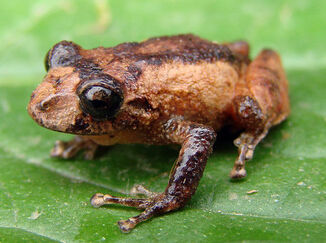
 Our lab contributed to the first report of Ranavirus presence in Colombia. Colombia is one of the most biodiverse countries for amphibians, boasting record numbers of frog and caecilian species. The study found Ranavirus in 14 of 274 individuals from 8 of 41 sampled localities, including highland and lowland sites. Infected frogs represented five native species of the genera Osornophryne, Pristimantis (such as P. bogotensis of the photo by Giovanni Alberto Chaves Portilla) and Leptodactylus, as well as the invasive American bullfrog Rana catesbeiana. Ranavirus can cause systemic hemorrhages, erythema on the lips, regurgitation, bleeding, muscle abnormalities and ulceration in infected amphibians. Ranavirus outbreaks have coincided with mass die off in amphibian populations, as documented in North America and Europe. However, little is known about the distribution and consequences of Ranavirus infection in tropical mountains and forests, where emergent diseases threaten amphibian biodiversity. The study is led by Dr. Vicky Flechas, and has been published in the journal Diseases of Aquatic Organisms. Citation: Flechas, S. V., J. Urbina, A. J. Crawford, K. Gutierrez, K. Corrales, L. A. Castellanos, M. A. González, A. M. Cuervo, and A. Catenazzi. First evidence of Ranavirus in native and invasive amphibians in Colombia. Diseases of Aquatic Organisms 16: 153:51-58. doi: 10.3354/dao03717.
0 Comments
Leave a Reply. |
Archives
June 2024
CATENAZZI LABNews from the lab Categories |
 RSS Feed
RSS Feed